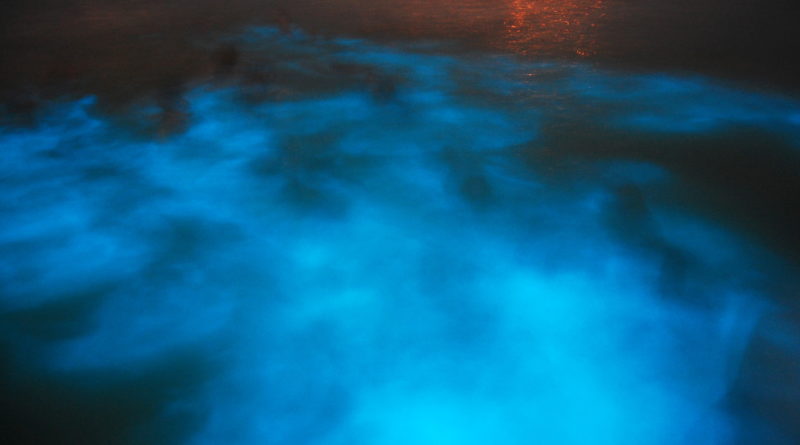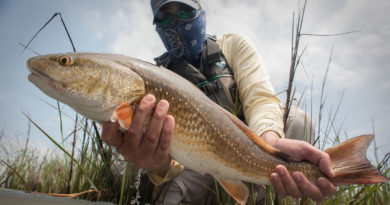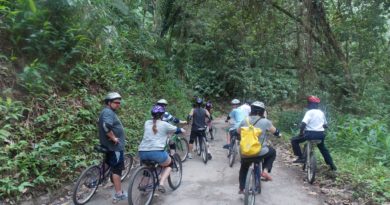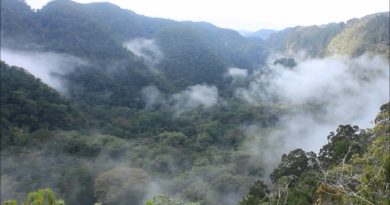Jamaican Natural Attractions A-Z
Alligator Hole/Canoe Valley (South Coast)
Alligator Hole, a misnomer for a small river with fascinating inhabitants, is found within the Canoe Valley National Nature Preserve, east of Alligator Pond, along a winding coastal road with changing flora. The Alligator Hole River, created by rainfall in the hills, runs underground for some of its course, meandering through the valley and entering the sea slightly south of Alligator Hole.
Bamboo Avenue (South Coast)
For nature lovers travelling along the south coast road between Lacovia and Middle Quarters, passing through this two-mile archway of bamboo is a breathtaking and serendipitous experience. Bamboo Avenue, also called “Holland Bamboo” cuts through the former Holland Sugar Estate, providing a beautifully arched shaded arrangement of bamboo on both banks. Along Bamboo Avenue, a combination of rustic and developed rest stops that provide sugar cane and coconut water, restrooms, snacks and travel information, only complement the impression of a cool oasis on a scenic South Coast drive.
Bath (Kingston)
In the 18th century, the town of Bath, in the cool foothills of the John Crow Mountains, was one of the most fashionable towns on the island. Bath is quite possibly the only town in Jamaica to have been created entirely because of a mineral spring. The mineral baths are probably the town’s best-known feature.
Black River (South Coast)
The capital of the parish of St Elizabeth, Black River is named after the river that runs through the parish and enters the sea at the southernmost section of the town. Originally called Rio Caobana by the Spanish, at the last count, more than 300 American crocodiles live predominantly in the Black River. The Black River Safari is a must for the very adventurous.
Blue Lagoon (Port Antonio)
The Blue Lagoon is over 178ft deep and is Port Antonio’s most famous attraction. Visitors can enjoy rum punch on the shaded veranda or watch the colors of the lagoon change with the movement of the sun
Bog Walk Gorge (Kingston)
The Bog Walk Gorge is an environmentalist’s paradise. The Rio Cobre meanders through the moss-covered limestone cliffs and boulders, keeping the banks of the river emerald green, even in times of drought. The gorge is naturally well stocked with hundreds of species of tropical plants that at points seem to clothe the area completely, virtually unspoiled by human settlement.
Castleton Gardens (Kingston)
Some 20km north of Kingston lies the small village of Castleton, known for its most famous attribute, the Castleton Botanical Gardens. The gardens at Castleton were established in 1862 to facilitate the relocation of the Bath Botanical Gardens, making it one of the oldest public botanical gardens in the western hemisphere. Castleton Botanical Gardens, ideal location for a day’s outing and picnics. Be sure to stop to look at the more than 25 varieties of palm trees, some of which are over 100 years old!
Cave Valley (Ocho Rios)
Cave Valley, so called because of its proximity to the large system of interconnecting limestone caves that stretch through the north and west of the country, is located on the banks of the Cave River. The Cave River begins underground, appearing and disappearing as it meanders from the interior, finally feeding into one of the larger rivers that flow to the sea. Outside the village there are two interesting natural features, the “Noisy Water” River Cave and “Rat Bat Hole”.
Cockpit Country (Falmouth)
Often regarded as Jamaica’s most inhospitable region, the Cockpit Country is a hilly and dense area with limestone denudations traversing three parishes and covering over 500 square miles. The so-called “cockpits” are caused because limestone, the predominant soil in the area, does not retain water. The Cockpit Country has the highest diversity of plants and animals anywhere on the island. It is a goldmine for birdwatchers, plant lovers and scientists.
Coyaba River Garden and Museum (Ocho Rios)
This is a good stop for history and botanical buffs. A small but nice museum starts with pre-Columbian history and follows the development of the island. The real splendor of the attraction, however, lies in its beautiful gardens. Stroll through the gardens, past natural springs and waterfalls. Small pools are filled with colorful koi as well as turtles.
Croydon on the Mountain (Montego Bay)
This working plantation nestled in the foothills of the Catadupa mountains provides a breathtaking and panoramic view of the surrounding countryside. The plantation invites visitors to journey into the majestic mountainous country where lush vegetation, wild flowers surrounds trickling waterfalls. Visitors can Capture the flavor of Jamaica while strolling through this tropical paradise.
Discovery Bay (Ocho Rios)
One of the most picturesque natural harbors in the Caribbean, Discovery Bay was renamed in 1947 to commemorate the place where it was once thought that Christopher Columbus first set foot on Jamaican soil. An afternoon at Puerto Seco is certainly in order for any visit to Discovery Bay. The beach is well developed, with a small jetty, a playground with rides for children of all ages, a family restaurant and a bar for adults. The water is a brilliant turquoise and shallow for about20 feet out to sea, but do carry or rent snorkeling equipment for a glimpse at another side of Jamaica.
Doctor’s Cave Beach (Montego Bay)
Founded in 1906, Doctor’s Cave Beach is nestled between the Marine Park and the Hip Strip. The translucent water is known for its mineral content and our world-famous white-sand beach is clean and inviting. More than just a great beach, the food court and beach bar at Doctor’s Cave provide a variety of meals and drinks to satisfy the taste buds.
Dunn’s River Falls (Ocho Rios)-
Dunn’s River Falls is one of Jamaica’s national treasures. Globally, it is as well-known as Reggae and equally stimulating. Described as a living and growing phenomenon, it continuously regenerates itself from deposits of travertine rock, the result of precipitation of calcium carbonate from the river, as it flows over the falls.
Green Grotto Caves (Ocho Rios)
Green Grotto Caves are said to have been a haven for runaway slaves in the 18th century. The caves are characterized by coastal limestone and are easily accessed. They feature a series of interconnected passageways and chambers, light holes, stalactites and stalagmites. Their most striking features are the rock formations and the small grotto lake at the innermost cavern.
Hellshire (Kingston)
Hellshire is one of the oldest continuously settled areas in Jamaica, yet, it has traditionally been one of the most sparsely populated places on the island. Today there are plans to turn the area into a reserve for the protection of the important natural resources and the unique habitats of endangered and protected species of flora and fauna. The Hellshire Hills are one of the last remaining habitats of the iguana, a large reptile that once roamed the entire island.
Hope Botanical Garden (Kingston)
The Royal Botanical Gardens, commonly called “Hope Gardens”, occupies 200 acres of land in the Liguanea Plains of urban St Andrew. The gardens were established in 1873 on a section of land from the estate of Major Richard Hope, one of the original English colonizers who arrived with the invading force of Penn and Venables. There are many rare and beautiful species of tropical plants and trees at the Royal Botanical Gardens, including the Hibiscus elatus (blue mahoe), the national tree of Jamaica.
Luminous Lagoon (Falmouth)
The Luminous Lagoon stretches along the marshlands of Trelawny from the small community of Rock to the town of Falmouth. It is home to millions of dinoflagellates. At night, the lagoon sparkles and glistens when disturbed, as these microscopic organisms produce an eerie glow, reflecting the outlines of fish and other objects in the water. The Luminous Lagoon is said to be the largest and most brilliant of four in the world, a fact that continually attracts and awes visitors and scientists from around the world.
Manchioneal (Port Antonio)
This is a favorite destination for Jamaicans and eco-minded tourists; the former mainly for the wide selection of seafood available, the latter for the beauty and mystique of the secluded and undeveloped Reach Falls, two miles away from the town center. The falls are extremely popular with incognito celebrities, and are used often for video and photo shoots.










